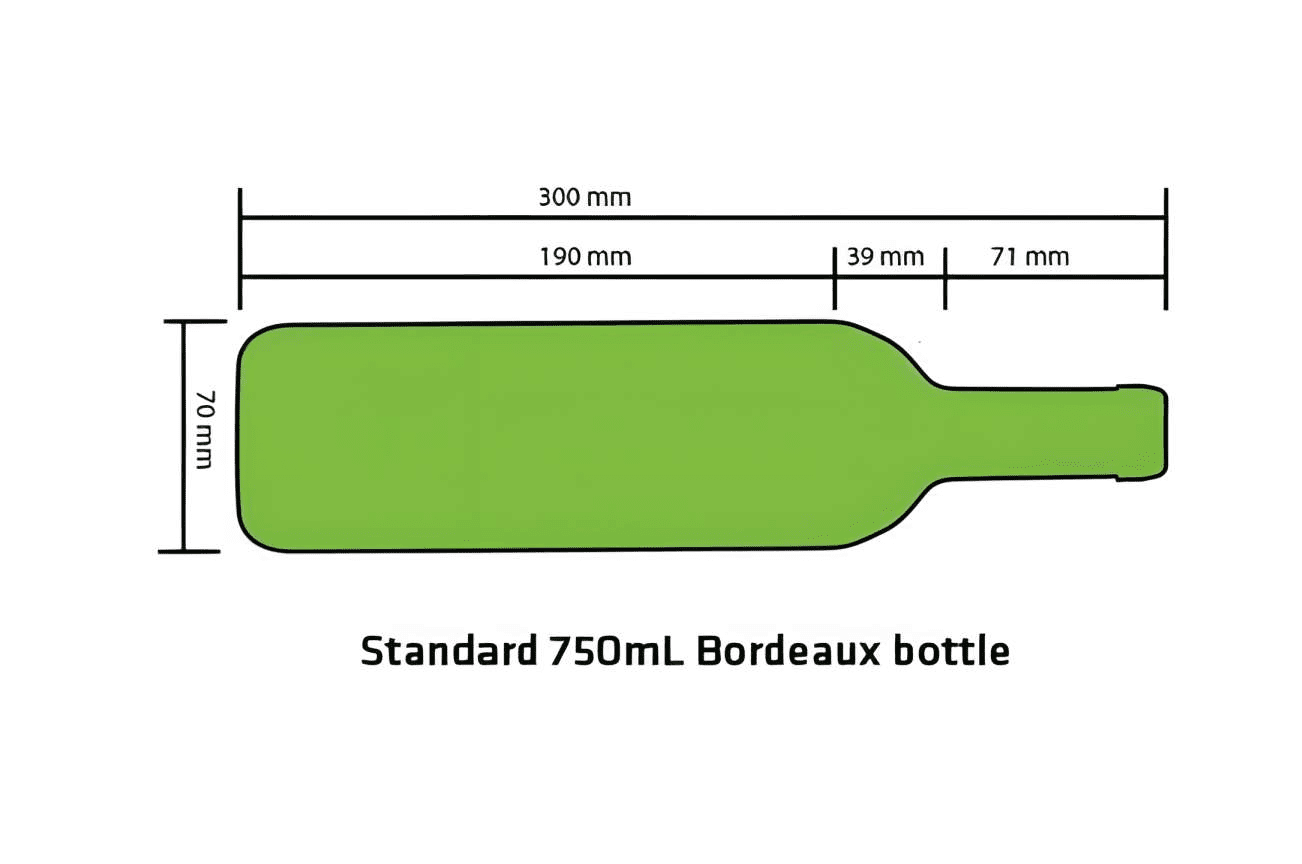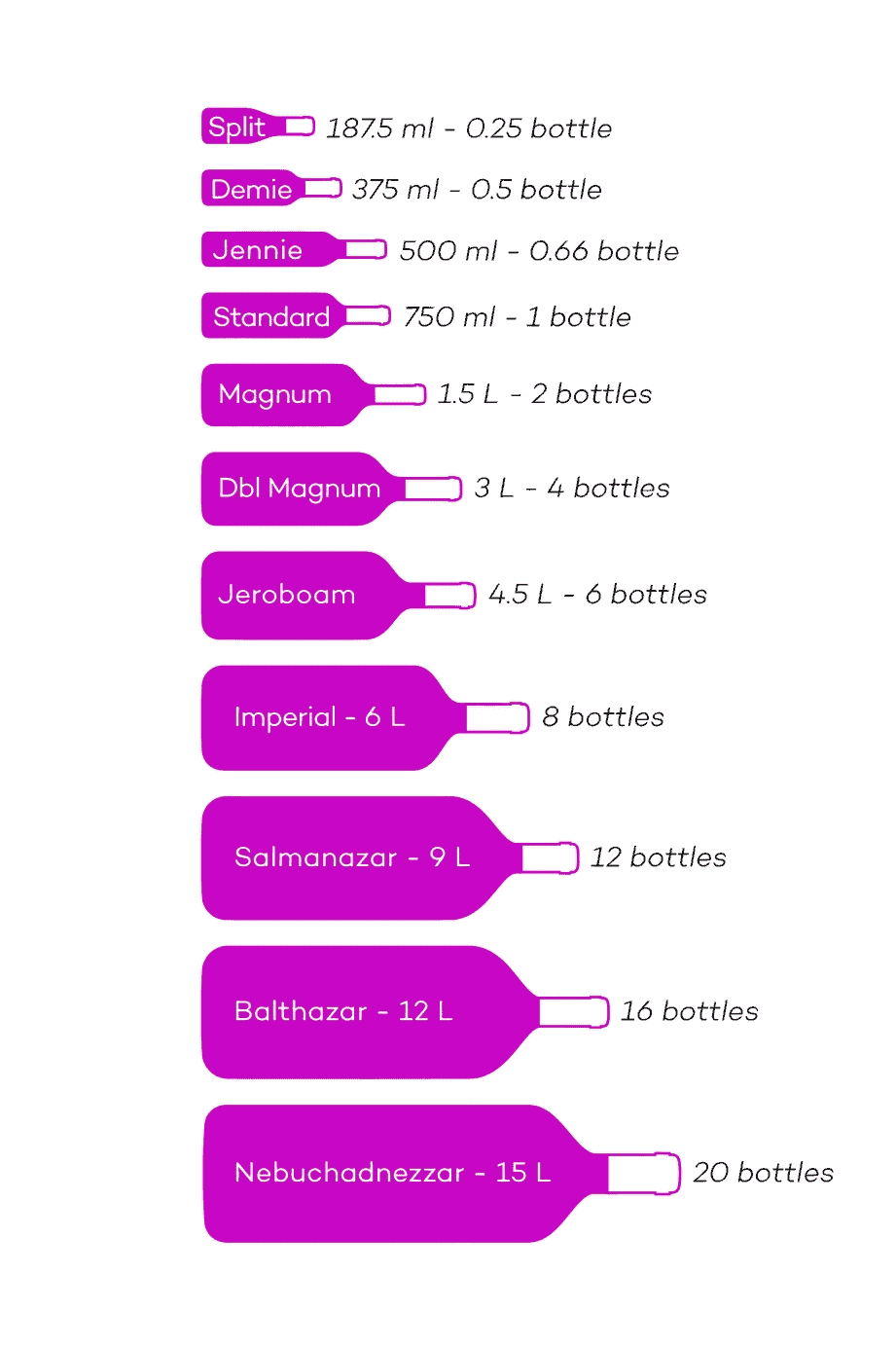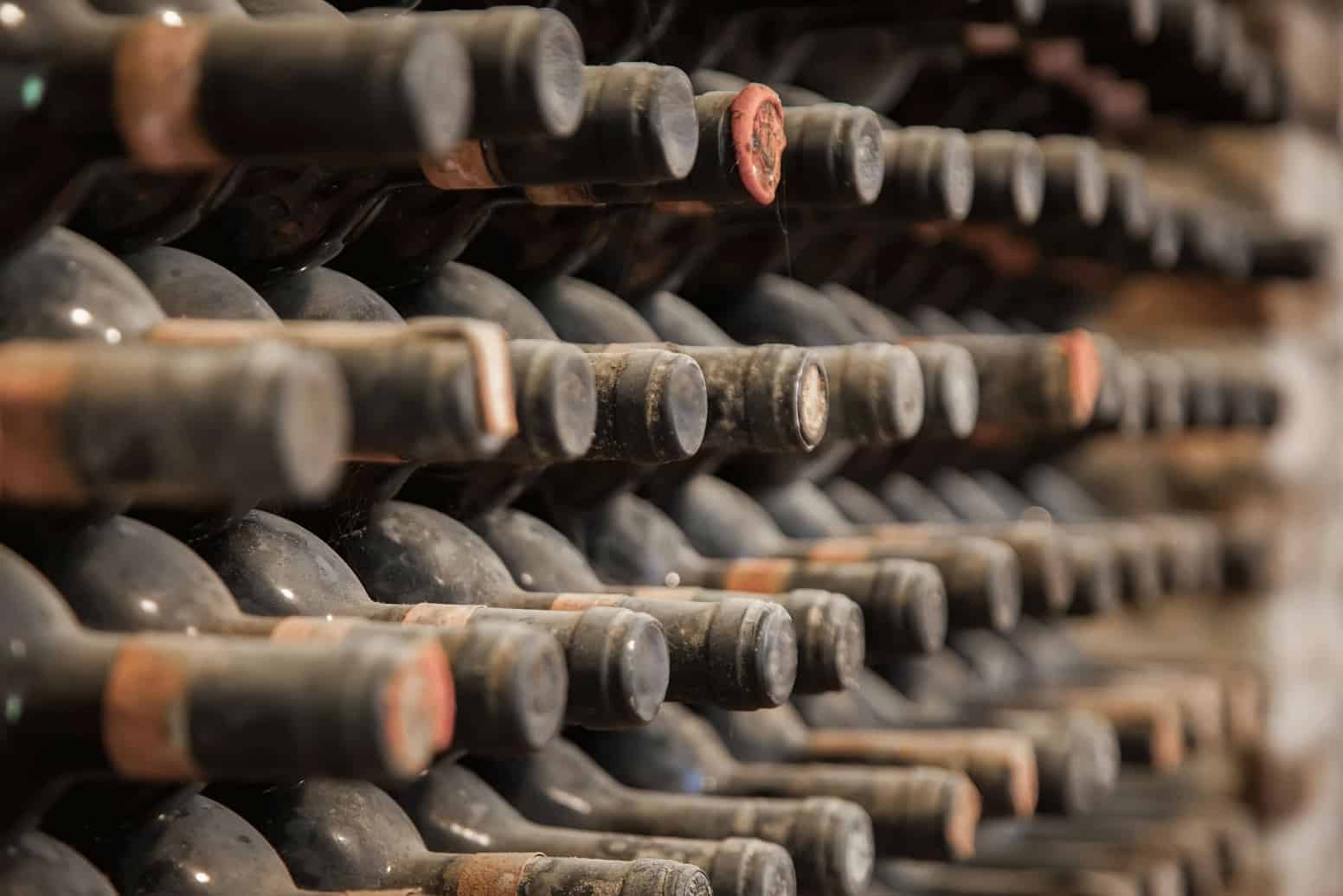If you have been to a liquor store, you’ve likely noticed that while wines come in different sizes, many seem to be around the same size. Is there a story behind the wine bottles?
How Tall Is The Standard Wine Bottle?

The standard bottle of wine that you might often see around is the 750 ml bottle. It’s more or less about 12 inches tall. And it has a 3 to 3.5-inch diameter base. However, this wasn’t always the case. There’s also a history behind the standard wine bottles that we now have.
The standard bottle is often referred to as a Bordeaux shaped bottle. Some of the most popular types of wine use this type of bottle. One bottle of this yields about five glasses of wine.
Long before the 12-inch 750 ml glass wine bottles came to be, people from ancient times used various storage devices for their wines. The ancient Georgians had the Kvevri. The Egyptians and Greeks had the amphora, a jar with two handles used to store wines.
As the Romans expanded their empire, they adopted the Gauls’ way of storing and transporting beer and wine. Instead of using amphorae, they shifted to using wooden barrels. The bottles of wine available now, especially the common 750 ml tall bottles, have some similarities with the ancient amphorae. They had tapered bottoms and long necks.
Around the 17th century, people started bottling wines using glass bottles and corks. One of the stories surrounding the origin of the 750 ml glass wine bottles stemmed from the development of thicker and stronger glass. Another origin story has something to do with the glass blowers.
Before people found a new way to make better glass bottles, glass blowers made the wine bottles by hand. And since the process involved blowing it manually, they would make bottles that could store 600 to 800 ml of wine. The average bottle size they could make was around 750 ml.
In 1821, a British company based in Bristol, H. Ricketts & Co. Glassworks patented a machine that produced glass bottles of the same size. It’s believed that this machine birthed the standard wine bottle we are familiar with today.
While glass bottles became a common way to store and transport wines, it wasn’t until the late 1970s that the 750 ml bottle was declared the standard size. It was probably due to importation and taxes.
It was easier to deal with all these if wines came in standard bottle packaging. In the United States of America, for example, there are government regulations concerning the sizes of wine bottles, and the 750ml bottle is among them.
How Tall Are The Other Wine Bottles?

While the standard 12-inch, 750ml wine Bordeaux bottle is something you often see, there are other wine bottle sizes out there. While some of them might be a common sight from where you are, there are also some bottle sizes that you might not be familiar with. You would be surprised at the number of wine bottle sizes out there and how tall some of them are!
One of the most interesting things about wine bottles and their different sizes is that some have fascinating names. They were named after kings mentioned in the bible. No one can really tell how this came to be. Perhaps this was some sort of homage to these characters.
Piccolo or Split
This mini bottle holds about 187.5 ml of wine. It’s roughly about a quarter of the standard 750 ml wine bottle. It stands at 7.5 inches tall and 2.5 inches wide. Opening a split bottle of wine is equivalent to more or less a glass of wine.
It is a good option if you are trying to control your consumption of one glass! Once you open it, you can just drink the content in one sitting. You don’t have to worry about how to keep the wine fresh!
Half Bottle or Demi
The Demi bottle can hold about 375 ml. This bottle falls between the Piccolo and the standard wine bottle. It’s about 9.5 inches tall and 2.25 inches wide. This serves about two and a half bottles of wine which is also equivalent to half the contents of the standard wine bottle.
Magnum
From the name itself, you know this bottle is going to be big. Magnum is, after all, the Latin word for large. It measures 13 inches tall and 4 inches in diameter. If you combine two standard bottles of wine, it should be stored in a Magnum bottle. This bottle is 1.5 liters of wine, equivalent to about 10 glasses.
Jeroboam or Double Magnum
The Jeroboam is a good introduction to wines stored in very large bottles. It’s named after the first king of the Hebrews in Northern Israel. Since this bottle is dubbed as a Double Magnum, you know it contains a lot of wine. This bottle holds four standard bottles of wine. It’s no surprise given it’s 18 inches tall and 5 inches wide.
Rehoboam
This bottle has a 19.5 inch and 5 inch dimension. It can hold about six standard bottles of wine. This bottle is often used for champagnes. But of course, some of your favorite wines also come in this size.
Methuselah
This wine bottle is 22-inches tall. Given how big and tall this is, it’s capable of holding 8 bottles of wine or about six liters of wine. It is one of the go-to bottles for sparkling wines.
Salmanazar
Twelve standard bottles of wine can fit in this 25 inch tall wine bottle. That is one case of wine! There’s no need to buy a case of wine if you can get a Salmanazar instead!
Balthazar
This 28-inch tall wine bottle is even taller and bigger than the Salmanazar. It serves 80 glasses of wine or 16 bottles of 750 ml wine.
Nebuchadnezzar
The Nebuchadnezzar wine bottle is 31 inches tall. If you have twenty bottles of wine, they can all fit in this very tall bottle!
Melchior
Who needs 24 individual bottles of wine when you can fit all that in the Melchior bottle? That’s about 18 liters of wine in one bottle!
Goliath
There is no doubt that this wine bottle is tall and massive! It is named after the mythical and biblical giant, Goliath! This bottle, which also goes by the name Primat, holds 27 bottles of your standard wine.
Midas or Melchizedek
It is the biggest and tallest wine bottle you can ever find in the world today. It stands at a towering 40 inches. And it has a 10-inch diameter. It’s made for champagne, but it can fit about 40 bottles of the standard 750 ml wine.
Does It Matter How Tall A Wine Bottle Is?

If you put all these bottles side by side, the differences in their height are so evident. It might leave some of you speechless, especially with the larger bottle format. So this begs the question, does the bottle’s height make a difference?
As mentioned before, the standard 12-inch bottle of wine is a common fixture. With the uniform sizing, it’s easier to regulate the importation and sales. It’s more practical for everyone involved.
You also won’t have difficulty dealing with storage for the standard Bordeaux bottles. Since standard bottles are pretty much the same size, they can easily fit in a wine rack or refrigerator.
While taller bottles of wine might take up more space, they still have advantages that you should know. You can use these big bottles to accentuate a room or bar. They can grab people’s attention. It’s a great centerpiece or talking point!
But more than that, these tall and large bottles are great for aging the wine slowly. As the wine ages, the better the taste. The wine’s flavors become fuller, enhancing your drinking experience. Of course, the bottle type is just one of several factors that affect the flavor complexity.
Since the large bottle is made of thicker glass, the wine inside it will have an even temperature. If there’s temperature disparity, it affects the aging process. If you plan to age wine for decades, opt for the ones in taller and larger bottles.
They have a better way of keeping the wine’s surface from air exposure. If you expose the wine to air, it will age faster. And most of the time, this does not do the wine any favor at all.
Consider the Size of Your Wine Bottle
Knowing how tall a wine bottle is might sound trivial. However, your wine-drinking days will get even better once you know more stuff about this beloved drink! So the next time you pick a wine for yourself or someone else, you know which one to go for!

George Moore, co-founder of Wine Flavor Guru, is a charismatic entrepreneur with a rich background in California’s wine industry. Alongside Sylvia, he transformed a Sonoma County vineyard into a source of premium wines. George’s expertise in sourcing exceptional grapes and his approachable style make wine appreciation both accessible and engaging.
